試す 金 - 無料
A Day in the Life of Sri Ramakrishna
The Vedanta Kesari
|June 2020
This is a re-presentation of one of Sri Ramakrishna’s visits to Kolkata, which is found in The Gospel of Sri Ramakrishna in the chapter ‘Visit to Nanda Bose’s House’. In this time of social distancing when social visits are unwelcome, let us swing back in time and accompany Sri Ramakrishna and his disciples on this visit.

It was 28 July 1885. The time was about 3 o’clock in the afternoon. It is very hot and humid. Sri Ramakrishna was sitting in Balaram’s drawing room with some devotees.1 Narayan, a close devotee, mentioned to the Master that Nanda Bose, an aristocrat of Baghbazar, had many pictures of gods and goddesses in his house. So, Sri Ramakrishna decided to visit Nanda Bose’s house (hereafter called Basu Bati). Putting on a pair of black varnished slippers and a red-bordered cloth and repeating the name of God, he got into a palanquin which had been brought for him. M., or Mahendranath Gupta, the author of The Gospel of Sri Ramakrishna, walked alongside the palanquin.2
The owners
According to the family records, Nanda Lal Basu and Pasupati Basu (later called Nanda Lal Bose and Pasupati Bose), sons of the renowned Basu family of Kantapukur in Shyambazar, North Kolkata, were the owners of Basu Bati. In about 1876, they acquired a large plot of land in Baghbazar and constructed the large mansion known as Basu Bati.3
In the nineteenth century, Kolkata was divided into two towns. There was the ‘White Town,’ where British officers and other Europeans lived, and the ‘Black Town’, where the natives lived. To avoid being counted as residents of the ‘inferior’ Black Town, many zamindar families in the Black Town had designed or remodeled their homes according to the European style of architecture prevalent at that time.4 Many of these buildings combined a Western exterior and an Eastern interior, with a large, open-spaced inner court-yard that had a Thakur dalan. Thakur dalan is a verandah or raised platform with a roof along the outside wall of a house. Large religious festivals or pujas were usually held there.5
このストーリーは、The Vedanta Kesari の June 2020 版からのものです。
Magzter GOLD を購読すると、厳選された何千ものプレミアム記事や、10,000 以上の雑誌や新聞にアクセスできます。
すでに購読者ですか? サインイン
The Vedanta Kesari からのその他のストーリー

The Vedanta Kesari
Panchakroshi Parikrama of Varanasi
At the snow-capped Kailas, the Divine Lord Shiva was seated with Mother Parvati.
5 mins
February 2023
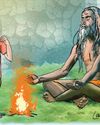
The Vedanta Kesari
Gadai and the Monks
A fictional narrative based on incidents from the childhood of Sri Ramakrishna.
2 mins
February 2023
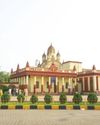
The Vedanta Kesari
Chintayo momo maanosho Hori...
Sri Ramakrishna loved songs. There probably was no normal day when he did not sing some songs.
4 mins
February 2023
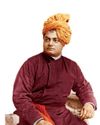
The Vedanta Kesari
The Vedanta Vaccine
The world is still struggling under the impact of the pandemic due to Covid-19 for the last three years.
5 mins
February 2023
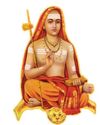
The Vedanta Kesari
Chandrakirti's Chariot: Self in Madhyamaka Buddhism and Advaita Vedanta
The goal in Advaita Vedanta is the cessation of suffering and the attainment of true fulfillment. Suffering, according to this school, is due to ignorance of the true nature of the self and consequent erroneous identification with the body-mind.
13 mins
February 2023
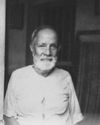
The Vedanta Kesari
Reminiscences of Sargachhi
Question: यद्यदाचरतत श्रेष्ठसतत्तदरेवरेतरो जनिः। ‘Whatever a superior person does, others do the same thing!’ (Gita 3:21) – What does this statement mean?
6 mins
February 2023

The Vedanta Kesari
THE AUTUMN FESTIVAL
A fictional narrative based on incidents from the childhood of Sri Ramakrishna.
2 mins
October 2022
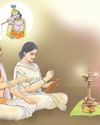
The Vedanta Kesari
Bards of Guruvayur: Vilwamangalam II
Saints of India
12 mins
October 2022
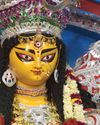
The Vedanta Kesari
In the Universal Mother’s Divine Playground
Swami Vivekananda never taught the worship of Mother Kali. In a letter to Mary Hale he writes, “Kali worship is not a necessary step in any religion.
11 mins
October 2022
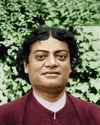
The Vedanta Kesari
Swami Vivekananda: A Sportsman Par Excellence
In various books and articles, Swami Vivekananda has been called a spiritual leader, a prophet, a patriot, a social reformer, a philosopher, a yogi, a writer, an orator, an educationist, a musician, and so on.
6 mins
October 2022
Translate
Change font size
